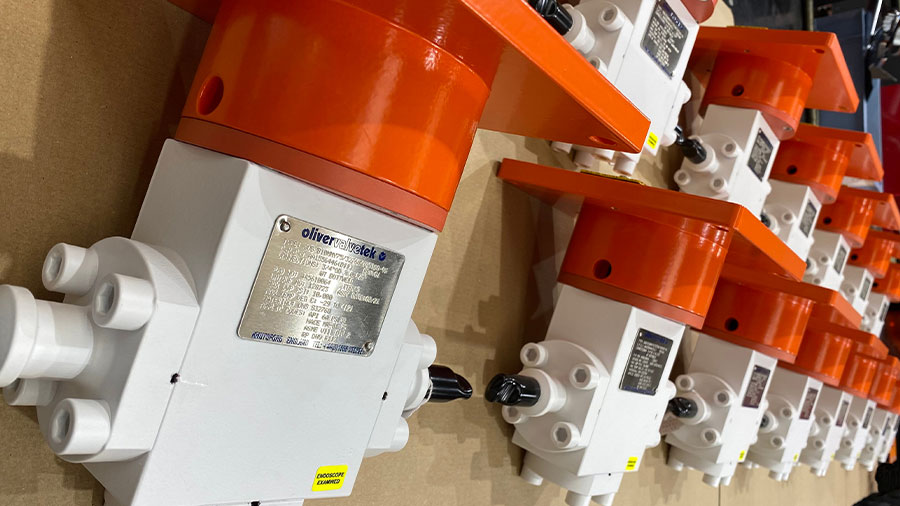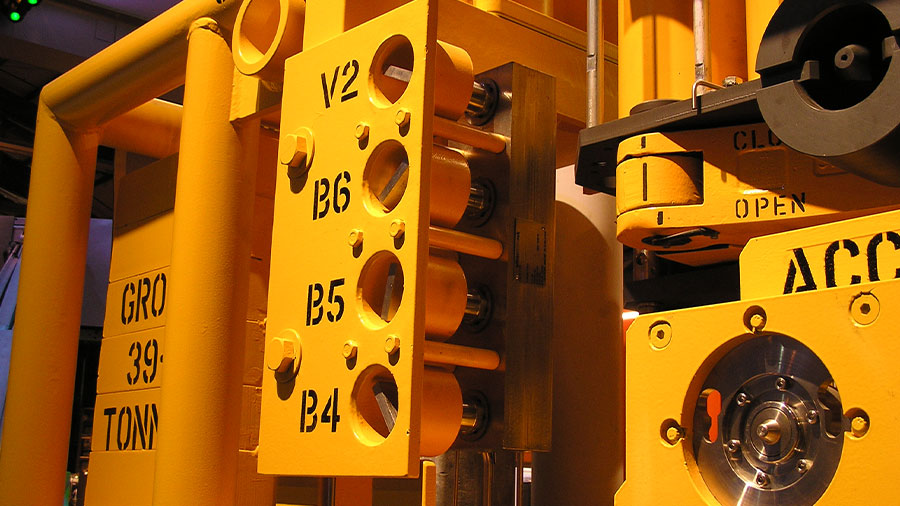
Subsea Distribution Units (SDU) and Umbilical Termination Units (UTA) are part of the critical Subsea architecture, for the safe and reliable handling of wellbore produced fluids. Selecting the right valve for these applications is vital to the overall efficiency and long-term reliability of the subsea field.
Underwater pipelines run at the bottom of the sea and allow a constant transport of oil and gas-produced fluids from the subsea well or manifold, which travels to the top side installation which could be an FPSO, platform or directly to an onshore processing installation. The ambient temperature, the process temperature and internal and hyperbaric pressure conditions at the seafloor in water depths of up to 3000m make the valve selection even more important.
Ensuring the safety of the entire subsea system requires high-quality valves for these specific oil, gas and control applications. Subsea Ball Valves provide the user with a soft seating quarter-turn isolation solution in either two-way, three-way, or four-way for many different applications. At Oliver Valvetek, we specialise in ball valves for subsea applications, commonly used in the subsea control systems, which are used to isolate, divert or test hydraulic and chemical lines associated with subsea oil and gas production systems.
Ball valve selection
Ball valves are one of the most commonly used valve types and can be found in use in a wide variety of industries. They have either a simple 90º or 180º operation and the possibility to allow uninterrupted flow to pass through the assembly makes this valve a popular choice for flow control applications.
Ball Valve Qualification
ALL Oliver Valvetek Ball valve products are rigorously qualified as a minimum to the latest API6A PR2F and API17D 2nd Ed. Ball Valves are also subject to customer-specific testing which exceeds those standards.
At the heart of every Ball Valve
The key to the Oliver Valvetek Ball Valve is its market-leading design, design innovation and superior quality of components. Oliver only manufactures the heart of the ball valve itself – the ball. This is to ensure the strict quality requirements of ball sphericalness are achieved for long-term reliability.
Floating ball valves
If a low-pressure application is required, the simplest form of ball valve is the Floating type because of a design that utilises fewer mechanical parts. The basic principle behind a floating ball valve is a design that has a ball that will be pushed by fluid under pressure into the downstream seat when turned to the closed position. The seat, typically made of PEEK is designed to create a positive sealing surface when mated with the ball. Floating valves are typically used in applications that call for smaller bore sizes and lower pressures.
Trunnion Ball Valves
The most common Ball Valve for subsea applications is a Trunnion ball valve, offered in either two-way, three-way, or four-way configurations. These valves are used for high-pressure applications, typically up to 15,000 psi.
A trunnion Ball Valve is assembled in a three-piece design; the three sections consist of a middle section, which houses the trunnion ball, seat and stem assembly. The end closures are either screwed or bolted to the body with metal to metal gaskets.
Seat materials again are typically PEEK and can be supplied with various elastomeric or polymeric seals depending on the required application. Please contact our sales team for more advice.
Subsea applications
Subsea Ball valves can be operated by a variety of methods. Human divers can operate the valves in shallow water conditions. In deeper water environments, ROV-friendly actuators are utilised. Oliver Valvetek has a large variety of different industry or customer paddle and ROV intervention tool designs.
For more information about Subsea Ball valves and their use within Subsea applications, why not get in touch with Oliver Valvetek today?
